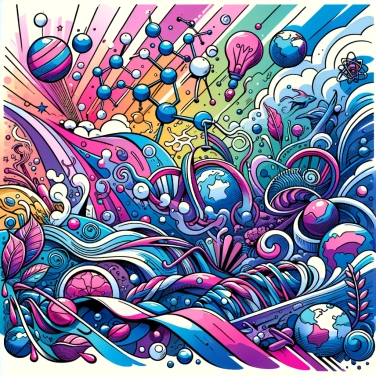Algae can be red, brown or green due to the presence of different pigments, such as chlorophyll, carotenoids or phycobiliproteins, which absorb light of different wavelengths for photosynthesis.

Algae change colors thanks to their pigments, chemical substances that absorb light differently depending on their category. Green algae mainly contain chlorophyll, just like land plants, which is why they have their familiar green color. Brown algae owe their color to a pigment called fucoxanthin, which masks the underlying green chlorophyll. Finally, red algae have a pigment named phycoerythrin, capable of capturing blue and green light, particularly effective at depth. These pigments perfectly explain why some algae can display such varied colors, sometimes flashy and sometimes subtle.
Underwater, the amount of light decreases quickly, and not all colors reach the same depth. Near the surface, light is very rich, allowing green algae to thrive thanks to their chlorophyll. Deeper down, brown algae do well because they have other pigments like fucoxanthin that can efficiently utilize low light. Finally, red algae are the champions of the depths, as they possess pigments such as phycoerythrin that can capture even the smallest amounts of light available at the bottom. These adaptations allow each group of algae to find its ideal niche according to depth, making the most of the available light.
Green algae, with their rapid growth, often serve as a staple food for many marine animals, such as snails and sea urchins. Brown algae, on the other hand, are essential for creating giant underwater forests known as kelp; these habitats host an incredible biodiversity, from the smallest crustaceans to large marine mammals like otters or seals. As for red algae, they are super important for forming coral reefs, hardening through their limestone; these reefs protect a variety of fish species, providing them shelter, food, and breeding grounds. Each of these colors of algae plays a unique role: they shape the underwater landscape, nourish species, and enable the entire marine ecosystem to maintain its balance and richness.
Evolution has shaped the coloration of algae through the selection of certain pigments adapted to specific light conditions. Green algae, for example, are very close to land plants, sharing chlorophyll with them to efficiently capture sunlight. In contrast, red and brown algae have developed additional pigments to make the most of the available light resources at different depths. Through diversification over time, each group of algae has found its own strategy, which explains the astonishing diversity of colors in the oceans today.
Brown algae contain alginate, a substance used as a food and cosmetic thickener in many everyday products (ice creams, sauces, toothpastes).
Green algae, particularly species of the genus Chlorella, are studied for their ability to produce large amounts of oxygen and absorb CO₂, thereby contributing to the fight against climate change.
Some species of red algae are used in Asian cuisine in the form of agar-agar, a popular natural plant-based gelling agent in pastry and molecular cooking.
Kelp (giant brown algae) forms vast underwater forests in certain oceans, providing habitat and food for thousands of marine species such as otters, fish, and invertebrates.

50% of respondents passed this quiz completely!
Question 1/5